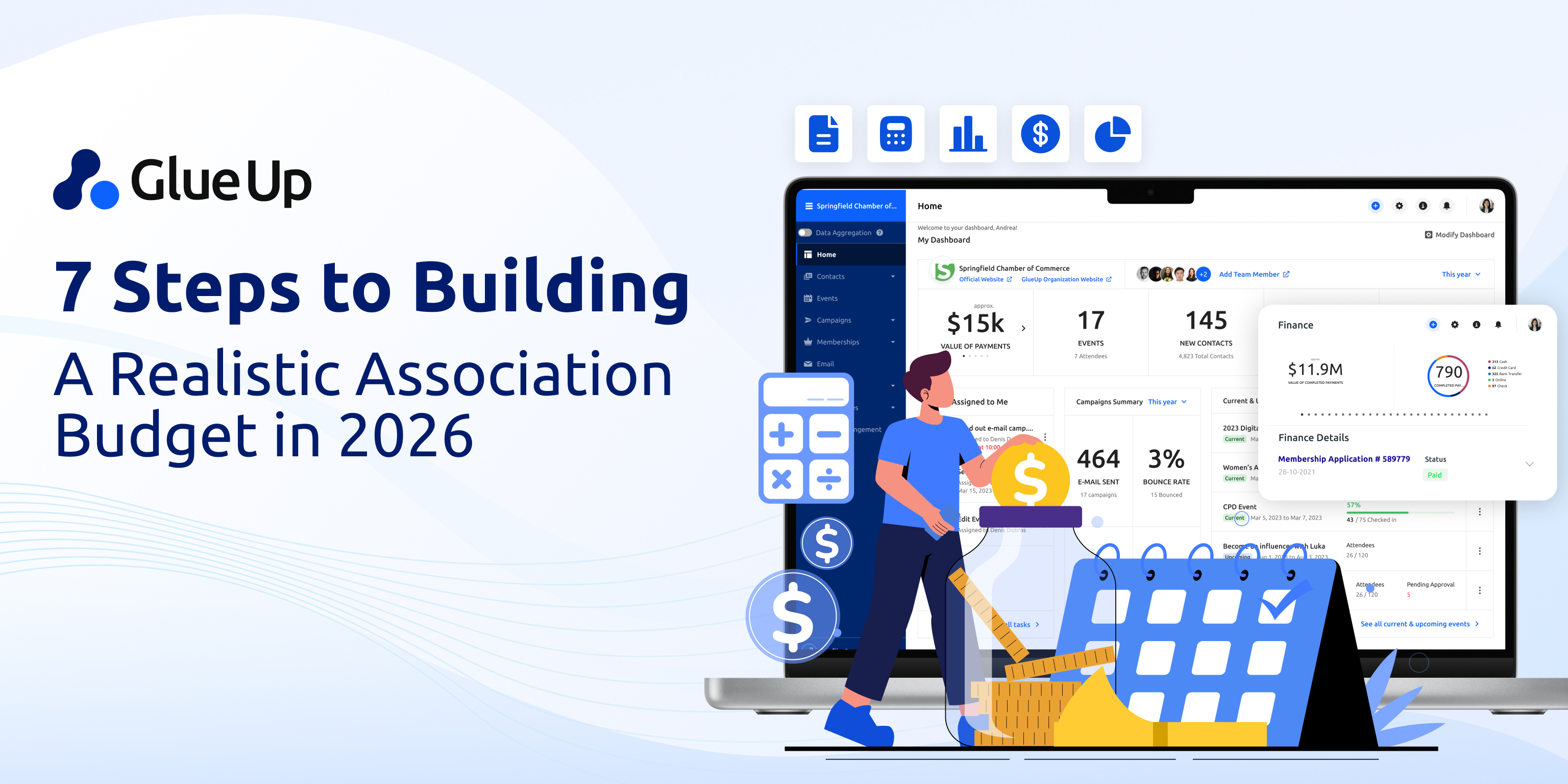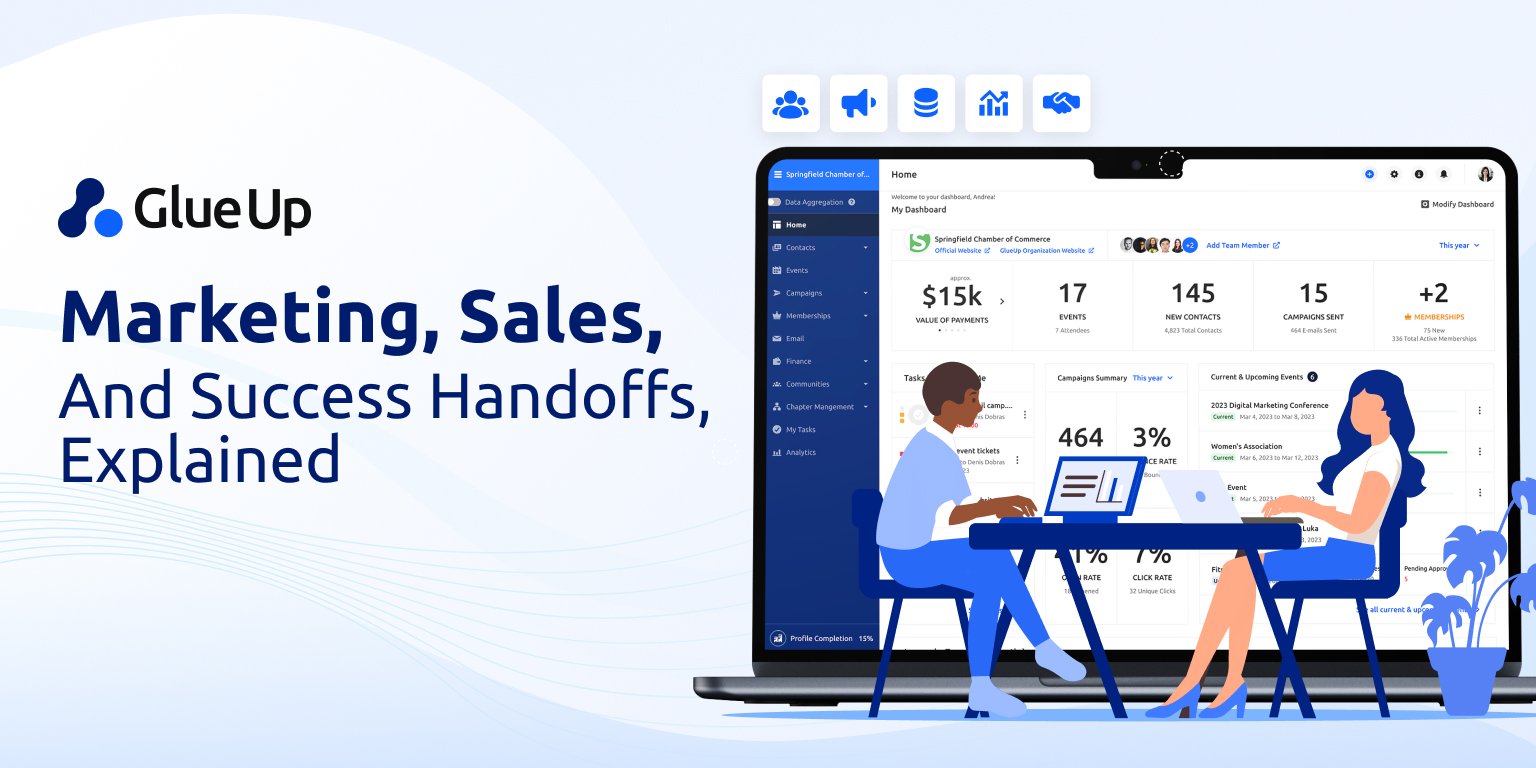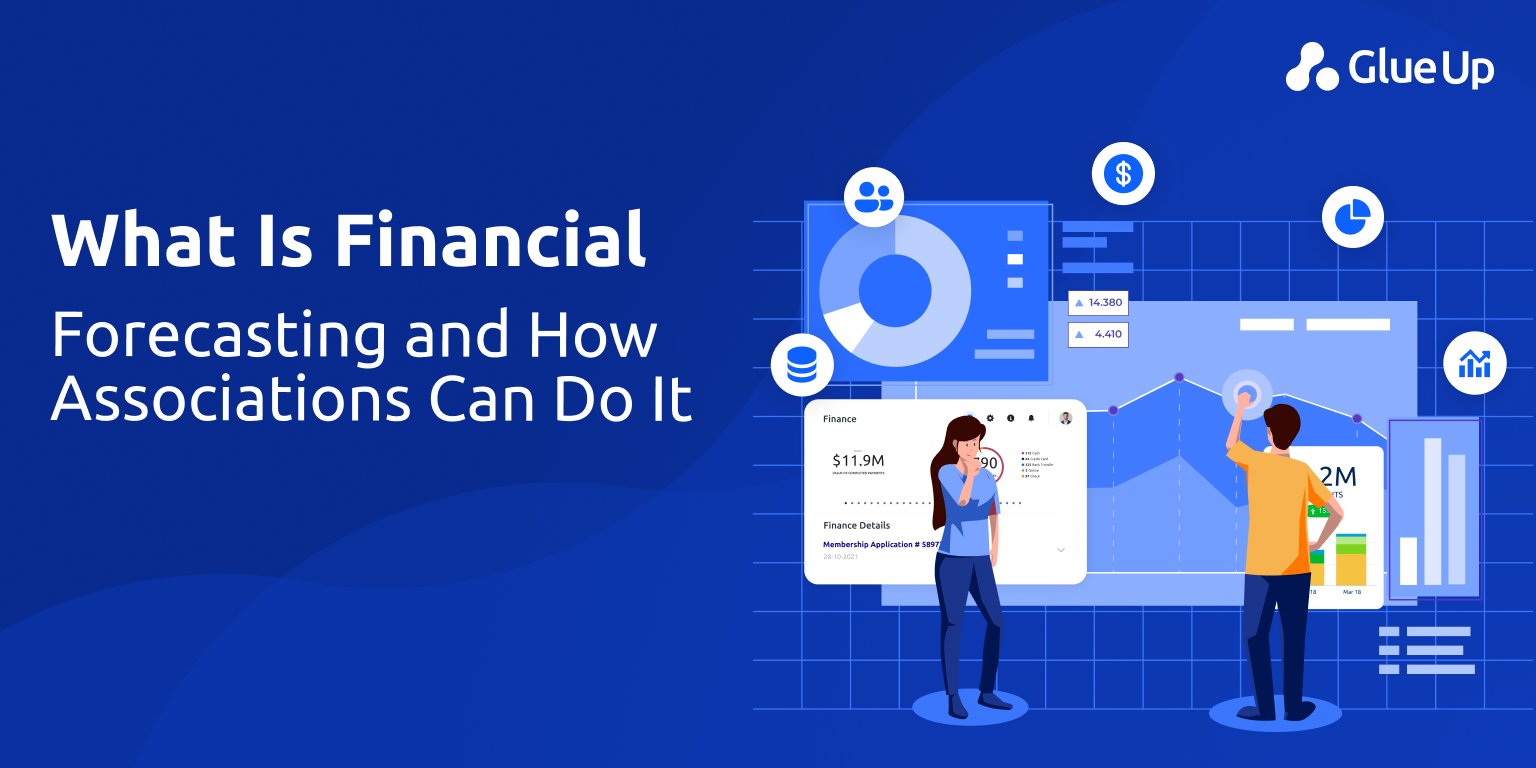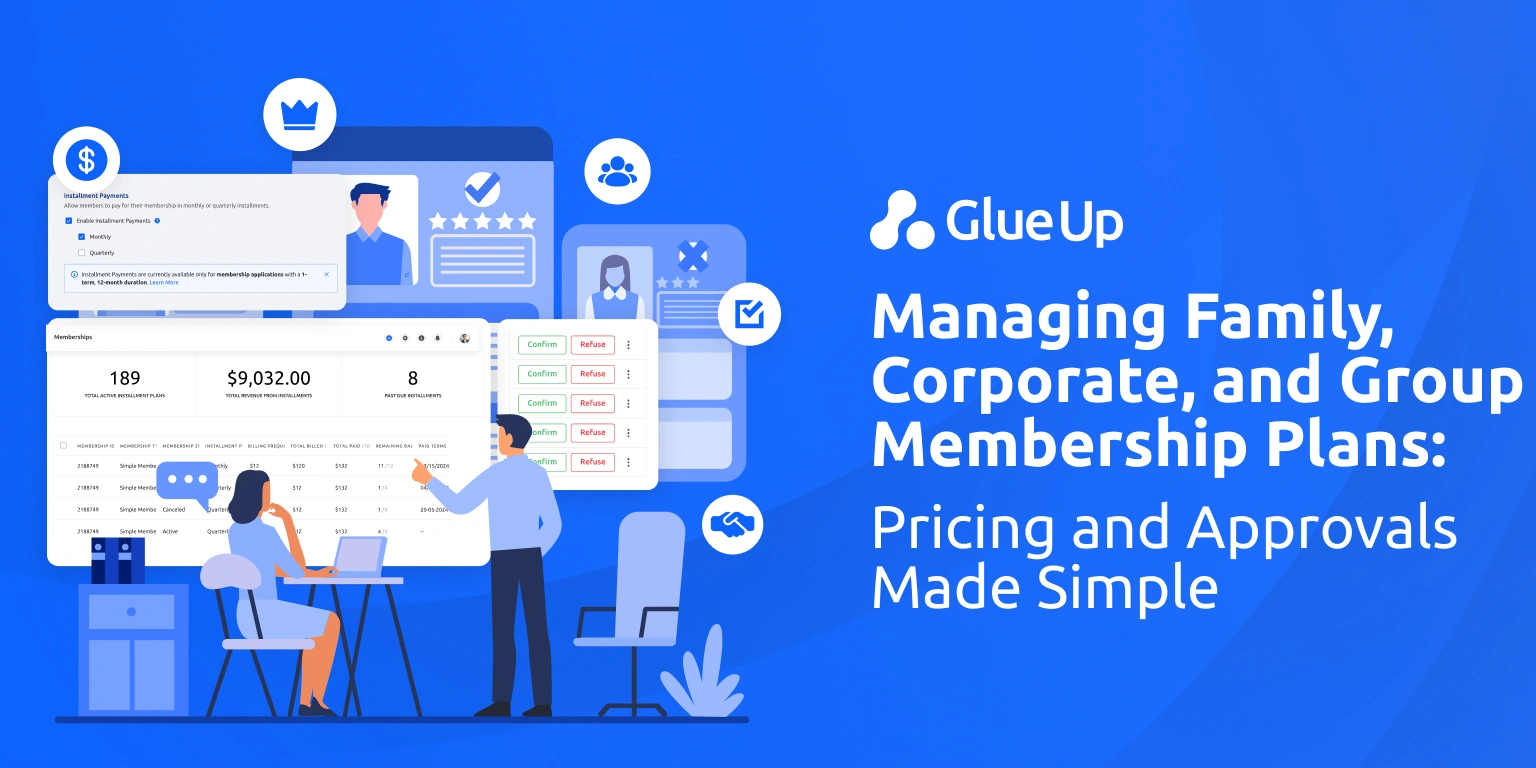
Walk into any boardroom during budget season and you will notice the same ritual play out. Leaders gather around a spreadsheet, numbers neatly balanced, and someone proudly declares the year ahead is covered. The reality, though, is less comforting. That perfectly balanced association budget can still collapse in real life when dues come late, event costs creep up, or a sponsor backs out without warning.
An association budget is designing resilience into the financial plan, so your programs survive surprises, and your board trusts the numbers. This is what separates a hopeful spreadsheet from a realistic association budget that holds up in 2026.
In this guide, we break down seven steps every membership-based organization should take to move from balance to resilience. Each step is grounded in practical actions you can take on Monday morning, backed by industry standards, and tied to how platforms like Glue Up make this process easier to sustain.
Key Takeaways
Most associations aim for “break-even” budgets, but that often hides deeper problems. A realistic association budget needs to account for timing differences, reserves, and unexpected revenue or expense shifts. Financial resilience matters more than just balanced numbers.
Inflation, wage growth, event costs, and sponsorship trends should be documented in a clear assumptions memo. This prevents surprises and keeps leadership aligned. Tools like Glue Up provide historical data that can ground those assumptions in reality.
Membership dues, event income, and sponsorships should be modeled with real math: churn rates, ticket tiers, and probability-weighted sponsorship renewals. Guesswork leads to shortfalls, while data-driven forecasting builds trust with the board.
Expenses should be classified by function (program, management, fundraising) and by nature (salaries, occupancy, IT). A strong reserve policy of at least 3–6 months operating coverage ensures stability when revenue timing shifts or costs spike.
A realistic budget is managed monthly with variance analysis, forecast accuracy tracking, and corrective action. Running three versions: base, optimistic, and guardrail; gives leadership pre-decided moves when reality diverges from plan. Glue Up’s dashboards make this variance engine actionable.
Quick Reads
- How to Budget Smart for NACE Membership Cost • Glue Up
- Sales Funnel Management for Associations • Glue Up
- What Is All-In-One Association Software? • Glue Up
- Event Budget Templates for Large and Small Events • Glue Up
- How Associations Can Increase Revenue • Glue Up
- How Smart Associations Monetize with Glue Up • Glue Up
Why Most Balanced Association Budgets Still Miss the Mark
Boards often push for “break-even” budgets because they look safe. The numbers add up, revenues match expenses, and everyone leaves the room relieved. But an association budget that simply balances ignores two brutal realities. First, money does not arrive and leave at the same time. Second, revenue forecasts built on hope instead of math crumble fast.
This is why the majority of associations experience midyear cash shortages, forced cuts, or frantic fundraising drives. A balanced budget is not the finish line. It is a false summit. The real measure of success is whether your association budget accounts for timing, reserves, and contingencies while keeping the mission funded.
Step 1: Set Your 2026 Assumptions in Writing
The first step in a realistic association budget is brutally simple: write down your assumptions. Inflation, wage growth, venue and catering costs, sponsorship softness, grant timelines, all of it. Do not let these factors remain invisible or implicit.
Your assumptions memo becomes the foundation of your 2026 association budget. It also forces board members and finance committees to agree on the rules of the game before the numbers are plugged in.
Ask yourself:
What inflation band are we using for salaries and benefits?
How much do we assume venue and food service will rise in cost compared to last year?
When do we actually expect renewals, registrations, and deposits to land in the bank?
Glue Up makes this step easier because it can pull historical data on membership renewals, event attendance, and sponsor activity. That history grounds your assumptions in actual behavior instead of guesswork.
Monday Morning Checklist
Draft a one-page assumptions memo
Review past dues timing and event cost curves using Glue Up reports
Share memo with the board finance committee for validation
Step 2: Start With Programs and Goals Then Price the Plan
Most organizations start the wrong way. They look at last year’s revenue, tweak it slightly, then force programs to fit. That backward logic creates budgets that are safe on paper but detached from mission.
The better way is to start with what you want to achieve: program goals, event strategies, membership growth, and then price those outcomes. Only after the plan is costed should you build the income side.
This program-first approach ensures your association budget aligns with mission rather than starving it. It also gives your board a clear picture of trade-offs: what does funding this program mean for staffing, or what happens if an event is cut.
Glue Up helps by segmenting members with Smart Lists and surfacing engagement data that shows which programs or event types actually move the needle.
Monday Morning Checklist
List strategic goals for 2026
Price each program with both direct and indirect costs
Present trade-offs clearly to leadership
Step 3: Forecast Revenue with Real Math
The lifeblood of any association budget is dues and events. Yet too often these numbers are inflated with optimism. A realistic association budget demands you forecast like an analyst, not a cheerleader.
Membership dues must be modeled with precision: new joins, churn, reinstates, and upgrades all matter. A dues increase should come with a sensitivity analysis, what happens if 5 percent fewer members renew?
Events should be budgeted bottom-up: ticket types, sponsor tiers, exhibit sales, and likely attendance. This is where rising costs of AV, catering, and labor in 2026 make the difference between profit and loss.
Sponsorships and grants should never be penciled in at 100 percent certainty. Weight them by probability. If a sponsor renews at 70 percent likelihood, only 70 percent should count toward base revenue.
Glue Up allows you to export detailed reports on membership patterns and event performance, turning what used to be guesswork into data-driven projections.
Monday Morning Checklist
Build a dues forecast model that accounts for churn
Create an event budget template with ticket, sponsor, and exhibitor line items
Probability-weight sponsorship renewals
Step 4: Cost It Honestly and Fund Reserves
An honest association budget does not bury costs. It lays them out by function (program, management, fundraising) and by nature (salaries, occupancy, IT, insurance). This matches GAAP standards and IRS Form 990 reporting requirements.
Beyond transparency, a realistic budget allocates to reserves. A reserve fund of three to six months of operations is survival. For some associations, particularly property or HOA types, even lenders expect reserves equal to at least 10 percent of the annual budget.
Glue Up can help here by tracking staff time across programs and surfacing indirect costs like payment processing fees that scale with revenue. That visibility ensures reserves are based on actual operating needs.
Monday Morning Checklist
Classify expenses by function and nature
Establish or update a reserve policy with board approval
Set capital budgets separately for long-term system upgrades
Step 5: Run Three Scenarios Before You Finalize
Every association budget should live in three versions: base, optimistic, and guardrail. The base is your expected path. The optimistic shows what happens if events outperform and dues rise. The guardrail is your safety net, what happens if attendance drops 10 percent or a key sponsor pulls out.
Scenario planning protects you from scrambling midyear. The secret is to tie each scenario to triggers. For example, if registrations are below 200 by June 1, scale down catering orders. If sponsor revenue is below $100K by Q2, freeze hiring.
Glue Up gives you the ability to set these triggers early. Ticket sales can be tracked in real time, and AI Copilot can draft pre-set contingency communications.
Monday Morning Checklist
Build three versions of your 2026 budget
Set explicit triggers for each scenario
Share with the board so they understand the pre-decided moves
Step 6: Install a Monthly Variance Engine
A realistic association budget is not something you set and forget. It is a living document managed month to month. That means running a variance engine: closing the books monthly, comparing budget vs actuals, explaining differences, and assigning corrective action.
Track KPIs like forecast accuracy, variance closure rate, event gross margin, and dues collection timing. Build a culture where variance is explained, not hidden.
Glue Up simplifies this by generating monthly executive dashboards and sending automated reminders when metrics fall outside expectations. Instead of waiting until Q4 to realize the budget is off, you fix it in real time.
Monday Morning Checklist
Close and review financials monthly
Track forecast accuracy and variance closure rates
Share dashboards with leadership and staff owners
Step 7: Present a Board-Ready Packet
The final test of a realistic association budget is not whether it looks good on a spreadsheet. It is whether your board says yes without confusion or delay.
A board-ready packet should include:
A one-page assumptions memo
Three scenarios with triggers
Operating, capital, and program budgets side by side
Reserve coverage in months
A variance calendar and KPI set
Glue Up dashboards and AI Copilot can export clean visuals and draft narratives that make this packet is board approved. The key is clarity: trade-offs should be obvious, and decisions should be simple.
Monday Morning Checklist
Compile a one-pager with assumptions
Present scenarios clearly with triggers
Send packet at least five business days before the meeting
Why Glue Up Is Built for This Work on Association Budget
Glue Up is not just a management platform. For associations, it is the system that turns assumptions into actuals. It connects membership, events, community, and payments in one place, so your 2026 association budget is built on integrated data.
Membership management: pull renewal patterns and segment members by type.
Event management: budget with actual ticket sales, sponsor packages, and exhibitor data.
Community and engagement: track program impact and align spend with value delivered.
Dashboards and reporting: turn budget variance into real-time visibility.
AI Copilot: draft assumptions memos, contingency scripts, and board packet narratives.
In other words, Glue Up makes your association budget realistic because it connects the financial plan to the actual member experience.
From Hopeful Balance to Realistic Resilience
A 2026 association budget that simply balances is not enough. Break-even looks good in a board packet but fails the first time revenue is delayed or costs run hot. Realism means writing down assumptions, pricing goals first, forecasting revenue with math, costing honestly, running scenarios, managing variance, and packaging for the board.
The difference is cultural. A realistic budget signals to staff, members, and sponsors that leadership is prepared, disciplined, and mission-focused.
In 2026, do not settle for balance. Build resilience into your association budget with Glue Up, and let the numbers tell a story of confidence.
Book a demo today and see how Glue Up turns budgets from fragile spreadsheets into living, breathing systems of trust.



